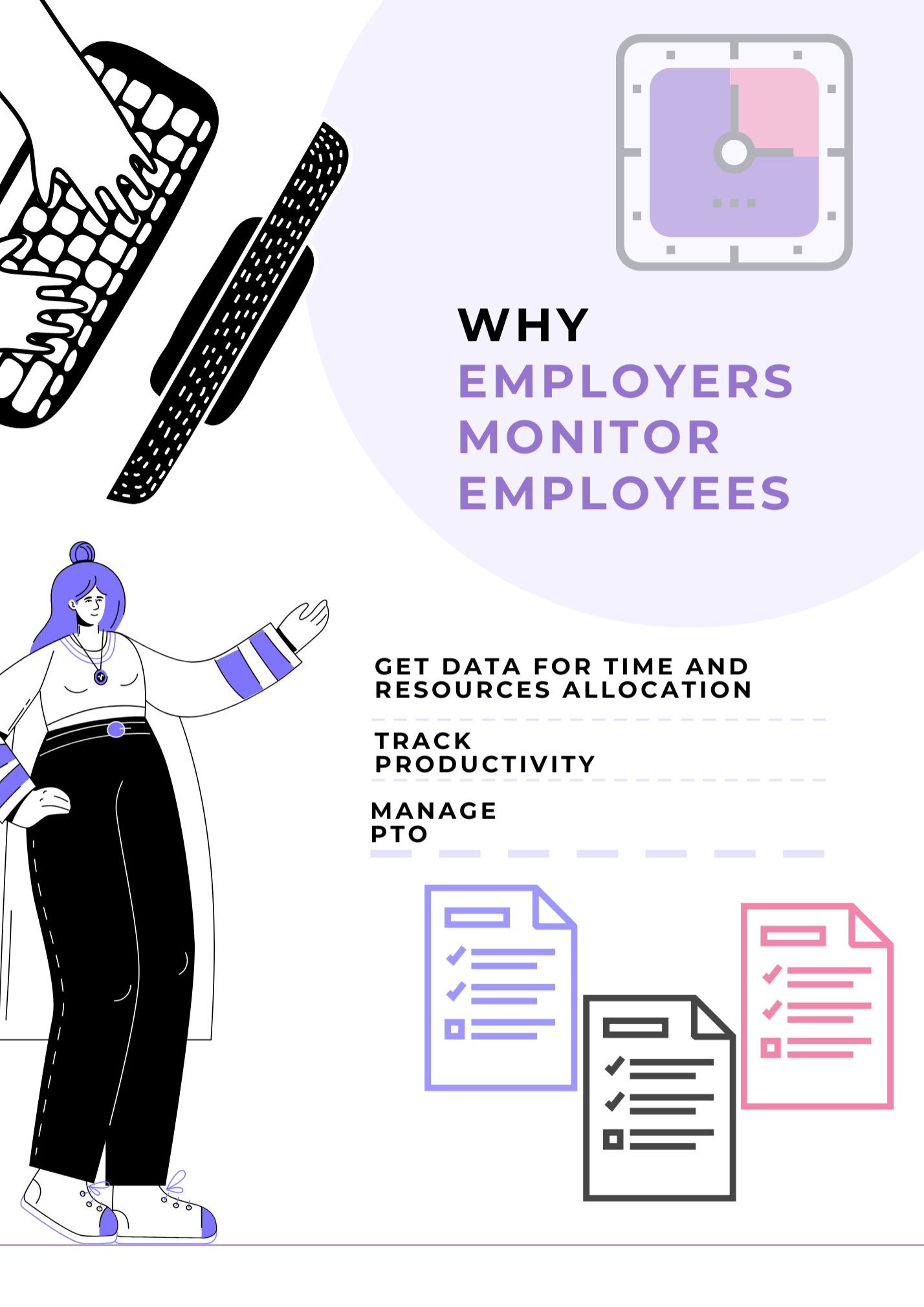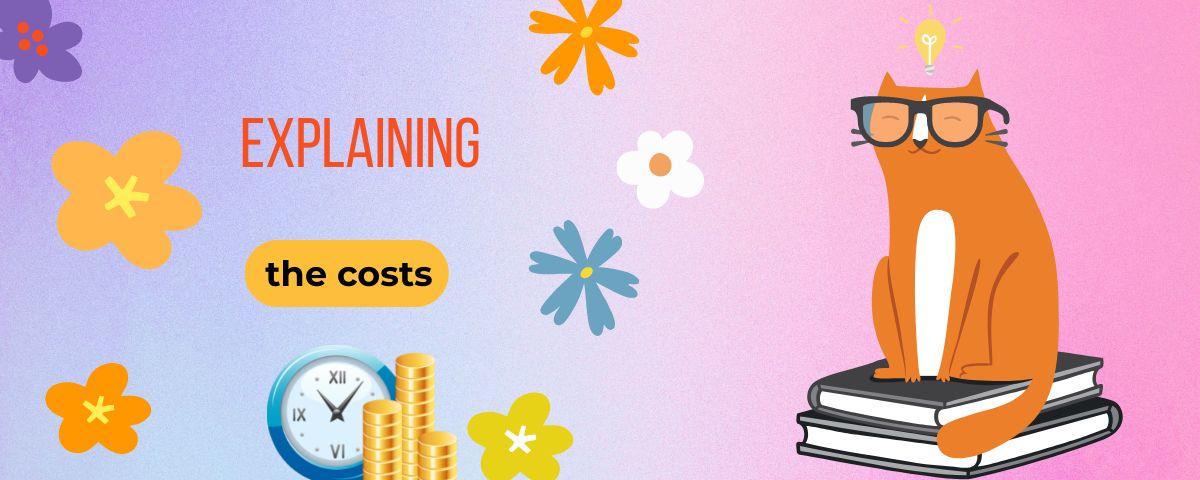Productivity vs. Privacy in Employee Tracking
Employee tracking is a controversial issue. On one hand, it's a great tool for employers who want to improve their workplace productivity. On the other hand, it's a privacy nightmare for employees who are unhappy about the invasion of their personal space. Learn how to strike the right balance.

Work-life balance is one of the primary reasons why employees are attracted to telecommuting since it allows them to maintain a more flexible work schedule.
Working remotely isn't without its challenges, however. Employees are increasingly worried about the use of employee monitoring technology in the workplace.
Along with remote work keeping on its rise in the global job market, workplace trends show that employee monitoring software will continue to be used by many regardless of the work arrangements of their employees.
It makes employee productivity versus privacy a hot topic developing around privacy issues and employee tracking.
Why employers monitor employees in the workplace
Tracking helps companies increase efficiency and productivity by:
- highlighting areas for improvement
- identifying strengths and weaknesses in the workforce.
By providing data on work hours, PTO and much more, employee monitoring software is a great way to keep track of your employee's performance.

Keeping track of employees' work allows employers to ensure that they are properly staffed and resourced to complete projects, but employee surveillance may cause significant privacy concerns because it can also be invasive.
According to TechNewsWorld now is the special moment for recognizing privacy vs. productivity issues:
We have a new generation of employees coming in that care about privacy rights.
The main questions relate to:
- what benefits
- what costs
- what ethical issues are there to know.
How to balance employee monitoring and protecting privacy
As reported by New York Times Archives, the most significant usage of the word 'privacy' was recorded in 2000 and reached 📈 668 times.

Since then, the interest in protecting privacy spiked further. When it comes to productivity vs. privacy, you can do a few things to ensure you're protecting both sides.
Focus on benefits

For starters, make sure that the monitoring software you use is not overwhelming for employees in terms of:
- learning curve
- lack of integrations with other tools
- functionality deployed in the actual workflows
Besides, any software you offer employees must have a clear system for removing accounts from the tracking program if employees leave the company or resign from their position.
Then, for a higher level of transparency develop policies defining what exactly is being monitored. In particular, ensure that the information about time consumption is strictly confidential.
Now, you're ready to state the benefits of using a time tracker with a timeline:
🕐sets clear boundaries on work hours
🕐 facilitates requesting time off
🕐 improves payroll processing
🕐 automates calculations and stores information in one place
🕐 creates an unbroken workflow
🕐 simplifies task management
🕐 increases individual and team productivity
🕐 helps distribute workload evenly.
Bottom Line: It's important to keep employees well-informed on the benefits listed above in the connection with privacy and demonstrate the zero friction relations between monitoring and confidentiality. How can it be achieved?
- Through creating documented policies for monitoring employee productivity
- Demonstrating openness for discussion (employees must know who exactly is appointed for replying to questions about monitoring)
- Giving constructive feedback
- Ensuring restricted access to personal information.
Explain costs

The damage of not tracking productivity can be higher than employees may realize. In actuality, it can affect the entire organization whether you're an owner, investor, or employee.
Here's how to accurately explain to employees what the cost of not monitoring productivity can be.
⏰ The absence of tracking online activity can cause a loss of control over task management and lead to multitasking. Meanwhile, context-switching comes with a heavy cost to personal and business productivity.
Side Note: It is important not to equate quiet periods of online engagement with employees' zero productivity. Otherwise, it breaks trust and decreases employee engagement.
⏰ In the deficiency of time tracking data, you can miss unexpected insights, and some important trends may stay uncovered, which is discouraging your time management and holding you back from being more strategic.
Bottom Line: Since your paycheck is threatened by what is affecting your performance at work, workplace monitoring along with ensuring data privacy looks like the obvious solution.
Prevent issues

Monitoring work always implies a delicate balancing act between productivity and privacy because it implies the question: "How do you make sure employees are doing their jobs while maintaining their sense of dignity?"
To show that time tracking imposes no danger to employee privacy rights, it is important to act in the preventive mode rather than reactive. Yet, it must be an employer's top priority to avoid the risks of going too far in employee monitoring.
One of the sure ways to keep track of employees without making them feel like they were being watched is a tracker with a sleek functionality aimed at zero privacy invasion.
Bottom Line: Choose a time tracker that helps keep things in balance. TMetric is trying to do just that by helping companies keep track of their employees without requiring them to overshare.
In particular, it does not collect confidential information: instead, it uses time and date entries to determine employees' online activity and assist a manager in indicating a potential issue with uneven workload distribution in real time.
Takeaways ✅
Employee monitoring is controversial but it's not as sinister as it's portrayed, particularly for employers who .
Tracking employees' work is an effective solution for tackling low productivity. Monitoring not only an employee's time but their behavior as well is important for maintaining an effective atmosphere of work.
However, this can be especially tricky when it comes to remote workers who are not in the same physical space as you or your team.
But what if there was a way to balance these two competing interests and allow managers to see how their employees were performing without violating their privacy or making them feel uncomfortable? There are three steps to take:
- Make privacy a central point of building company culture. Privacy is not just about protecting workers from having their personal information stolen by unscrupulous employers. It's also about ensuring that employees feel comfortable giving honest feedback, which is critical to maintaining a productive workplace culture.
- Develop and document privacy-related policies. Policies built around privacy awareness can easily determine which tracking inputs are mandatory and which ones are optional. Do not be afraid of having explicit conversations when explaining to employees the costs of no tracking. It will help see the benefits of monitoring more clearly.
- Tracking employees' productivity is a key part of any manager's job. The best way to do this ethically, i.e., without running a risk of micromanagement or privacy breach is the implementation of advanced time tracking like TMetric.

